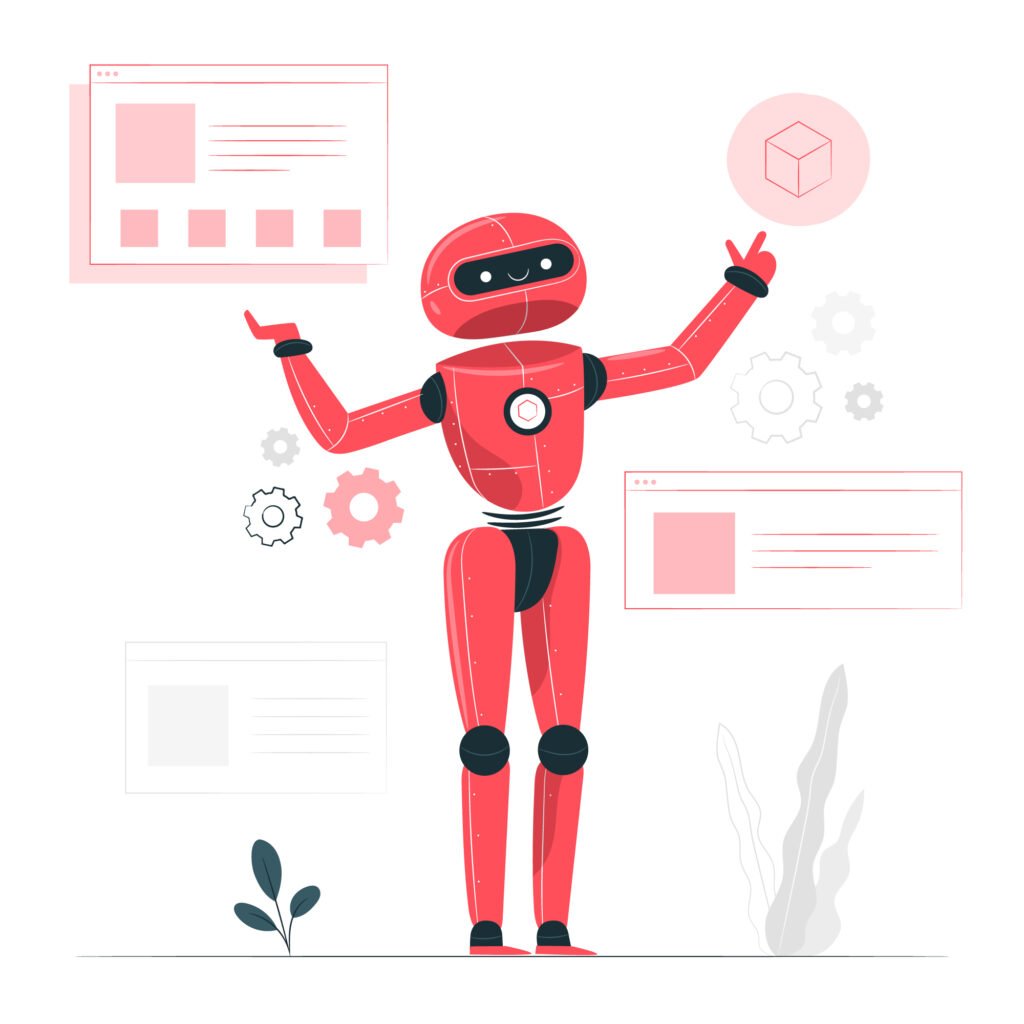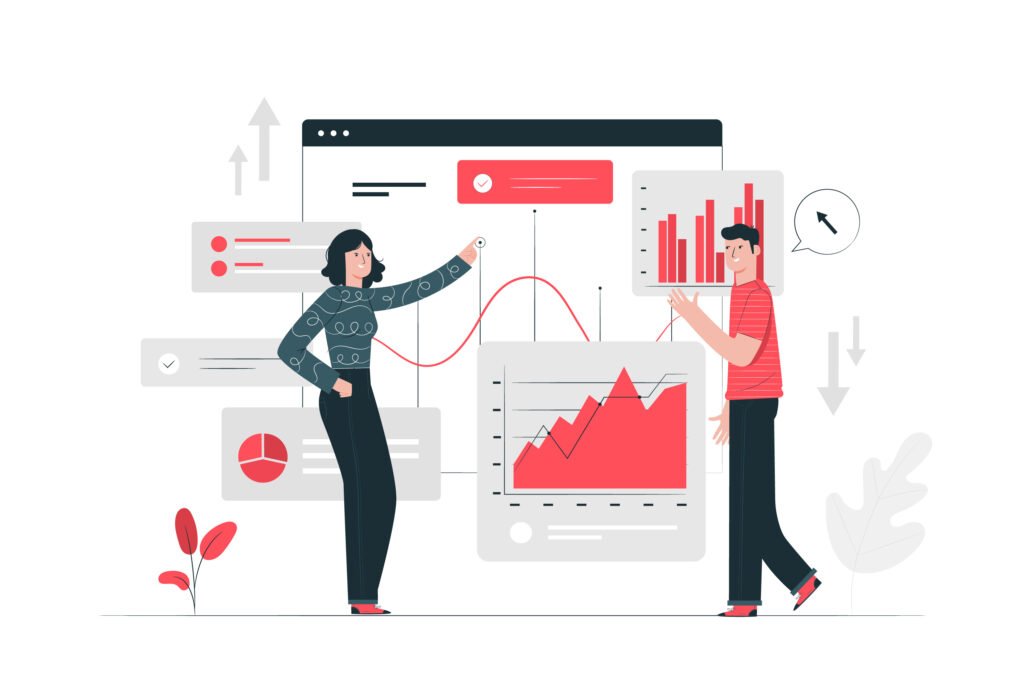Optical Character Recognition (OCR) Algorithm: How to Improve and Automate Business Processes
19 Mar 2024
Igor Kelly

Optical text recognition has its origins in supporting visually impaired people. Today, AI-powered OCR has improved significantly and established itself in new areas. No matter whether you want to convert a printed manual, a photo, or an old fax into a writable document, with an image-to-text conversion, the desired images or PDF files are available for you to edit.
In this article, we will discover OCR processing capabilities for business, explore optical character recognition examples, and see what the technology’s future holds.
OCR Capabilities Unveiled
Optical Character Recognition (OCR) is a method of machine data capture in which handwritten or typewritten characters (letters, numbers, special characters) or bar markings (barcodes) are read at high speed. Extracting text usually involves converting it into word units, lines, or blocks of text, providing users access to a digital rendition of the scanned content.
There are two main kinds of OCR: traditional and handwritten. They both aim to do the same thing, but they go about it in different ways when pulling out the information.
With traditional OCR, text recognition is based on the available font styles, which the OCR systems can use to train. However, reading and encoding are challenging with handwritten OCR, where each writing style is unique. Unlike typed text, which appears the same across the board, handwritten text is unique to the person. Handwritten OCR requires more training for accurate pattern recognition. Depending on the situation, various OCR methods are available:
- Convolutional Neural Network (CNN): Utilizes deep learning algorithms to analyze and recognize patterns within images, particularly effective for character recognition tasks due to its ability to learn hierarchical features.
- Support Vector Machines (SVM): Applies machine learning techniques to classify characters by finding the optimal hyperplane that separates different classes, commonly used in OCR for its efficiency and accuracy.
- Ensemble methods: Combines predictions from multiple OCR models to improve overall accuracy and robustness, leveraging diverse algorithms and feature representations for better performance.
- Incremental recognition: Processes characters gradually, refining recognition results iteratively by considering contextual information and refining predictions based on previous characters recognized in the sequence.
- Part-based recognition: Analyzes characters by decomposing them into constituent parts or features, allowing the OCR system to handle character appearance and context variations more effectively.
OCR processing is responsible for the following functions:
- Capturing and interpreting markings in designated fields: Applied in companies where OCR technology reads order or delivery notes, automatically extracting product codes and quantities, facilitating inventory management and order processing.
- Capturing barcodes by scanners: Implemented in environments at checkout counters where scanners read product barcodes, swiftly updating inventory databases and generating transaction receipts, enhancing operational efficiency.
- Reading text using a plain text reader: Utilized where historical documents are scanned and converted into digital formats using OCR. Machine learning in OCR enables researchers to access and search through digitized texts for scholarly and historical analysis.
OCR software is available as PC software, a free online tool, or an app for smartphones and tablets. Likewise, printers, scanners and other multifunctional devices that have integrated OCR models are now available on the market, and depending on what’s available, data analytics solution companies help to choose the right solution.
How OCR Works: Process Explained
OCR algorithms typically involve various stages, including image preprocessing, feature extraction, character segmentation, and pattern recognition. They utilize machine learning and information extraction techniques to accurately convert images containing text into editable and searchable digital text documents. Here are three main hardware and software elements involved in the functioning of OCR in business:
Converting the physical document to a digital image
At this stage, an optical scanner component is required to convert the document into a digital image. If the document is in a physical paper, it is essential to define the area of interest so that only these areas are decoded. The areas with the text will be considered for conversion, while the rest will remain null. The images on the document are converted to background colors while the text remains dark – this helps separate the characters from the background.
Character recognition phase
Character recognition in image processing starts with capturing specific characters in the text. The system does not analyze all text – numbers and letters – simultaneously. It selects smaller segments, most likely individual words if the AI system can accurately recognize the language. This step includes two tasks:
- Feature detection: It is used to identify the newer character using rules that determine certain text properties. For example, the letter «T» may look very simple to us, but to an AI, it is a relatively complicated combination of vertical and horizontal lines.
- Pattern recognition: AI develops by collecting texts and numbers. After that, it automatically identifies and recognizes matches from the documents to its learned database.
Processing and outputting text
All identified characters are converted into a specific code to be saved for future use. It is important to have post-processing so that the first output can be double-checked. For example, the letters «I» and «1» may look a little similar, making it difficult for the system to recognize them, especially if they are handwriting.
Users can confidently utilize the processed data for various purposes such as data analysis, text recognition, or archival purposes. The standardized format enables seamless integration into other systems or applications for extended functionalities.
Real-world Applications and Use Cases
To demonstrate how widely OCR techniques are used, we have provided several examples of OCR-driven business process optimization from different industries:
Banking and finance document management
The banking and financial sector is making full use of OCT technology. Document workflow automation helps improve security fraud prevention, reduce risk, and speed up processing. Banks and banking apps use OCR to extract important data from checks, such as account numbers, amount, and hand signatures. OCR in business helps process loan and mortgage applications, invoices, and payroll faster.
All banking documents, such as records, receipts, bank statements, and checks, were physical before OCR use cases became more well-known. With OCR-driven digital transformation, banks and financial institutions can streamline processes, eliminate manual errors, and improve process efficiency through rapid data access.
Text-to-speech processing
OCR technology text-to-speech application is an excellent help for visually impaired people to function more easily. OCR algorithm scans texts and uses voice devices to recognize them. The content is then read aloud. Although the text-to-speech aspect of the OCR recognition algorithm was one of the first applications, it is now being developed and improved to meet the unique needs of people with visual impairments by supporting multiple dialects and languages.

Text extraction of multi-category scanned paper document records
Historical valuable documents can be preserved, stored, and indestructible by converting them into a digitalized format. OCR algorithms digitize ancient and rare books, allowing these manuscripts with irregular fonts to be digitally altered and made searchable for the future.
OCR technology also effectively transcribes invoices, receipts, invoices and other documents of different categories. Newsletters, documents with numbered circles, checklists, and multi-section materials such as tax forms and manuals are all examples of documents that can undergo digitization.
EHR document management
With OCR capabilities, healthcare providers can transcribe medical labels and automatically capture medical data. The medical data is captured from handwritten prescriptions, medication information, and quantity to avoid manual errors, duplication, and negligence.
Data processing automation allows the healthcare industry to quickly scan, store, and search a patient’s medical history. OCR digitizes scan reports, patient health records, insurance data, X-rays, and other documents. By digitizing, transcribing, and storing medical labels, OCR makes it easier to streamline process flow and accelerate healthcare delivery.
Logistics and supply chain document management
Logistics providers use OCR algorithms to add transparency to the supply chain and better track package labels, invoices, and receipts. For example, Foresight Group uses Amazon Textract to automate invoice processing in SAP. The manual input of these business records proved laborious and prone to errors as Foresight staff had to input the data across various accounting platforms. Amazon Textract allows document scanning to read characters more accurately in many different layouts.
Improving OCR Performance and Adoption
Overcoming challenges in OCR integration is one of the key tasks for businesses who want to transform their existing and new documents into a fully searchable knowledge archive. Below, we listed the most frequent challenges in OCR processing and supplemented each one with exclusive mitigation tips:
- Character confusion: Identifying characters such as «O» and «0» can be challenging due to their visual similarities, especially in handwritten text. Implement post-processing algorithms to compare potential characters and resolve ambiguities based on context or adjacent characters.
- Handwriting variation: Handwritten text often exhibits significant variability in style, size, and stroke thickness, leading to difficulties in accurate character recognition. Train OCR models with diverse handwriting samples. Search for data engineering services implementing machine learning techniques to adapt to varying styles and contexts.
- Noise and distortion: Image noise, distortion, or poor image quality can affect the clarity of characters, causing misinterpretations during OCR processing. Enhance image preprocessing techniques such as noise reduction, image normalization, and edge detection to improve character recognition accuracy in challenging environments.
Future Trends and Innovations in OCR
What advancements are shaping the future of OCR? Below, we described three emerging technologies in OCR:
1. Deep learning and neural networks: Deep learning techniques, particularly convolutional neural networks (CNNs), enhance OCR accuracy and efficiency by allowing systems to learn complex patterns and features from large datasets.
In autonomous vehicles, CNNs will expand OCR capabilities by enabling onboard systems to accurately recognize road signs, traffic signals, and alphanumeric characters on various road surfaces, enhancing navigation and safety features.

2. Natural Language Processing (NLP) integration: Integration of NLP with OCR enables systems to understand and interpret the context of text, improving the accuracy of text extraction and document understanding.
OCR coupled with NLP can extract meaningful insights from unstructured documents more effectively, thus helping analyze medical records and patient documents to support clinical decision-making.
3. Edge computing for real-time OCR: Leveraging edge computing technologies, OCR processing can be performed directly on the device or at the network edge, enabling real-time text recognition without relying heavily on cloud-based services.
Edge computing-based OCR can be deployed in smart manufacturing environments. It enables real-time quality control by directly recognizing and inspecting product labels, serial numbers, and barcodes on production line equipment, ensuring efficient and accurate manufacturing processes without relying on continuous cloud connectivity.
Conclusion
Optical Character Recognition is a transformative technology that increases efficiency in many areas and offers new opportunities for document digitization and accessibility. As with any technology, there are challenges and limitations, but OCR systems’ ongoing development and improvement make it an indispensable tool in the modern data landscape.
In AI-powered document analysis applications, character recognition in image processing allows for the following benefits for businesses:
- Automated data entry tasks
- Reduction of manual effort and labor costs
- Improved efficiency in document management workflow
- Facilitation of faster decision-making processes
- Enhanced customer service through timely access to data.
Discuss your business needs with Lightpoint experts – we’ll help you develop an intelligent character recognition tool and train it with the project-specific dataset.